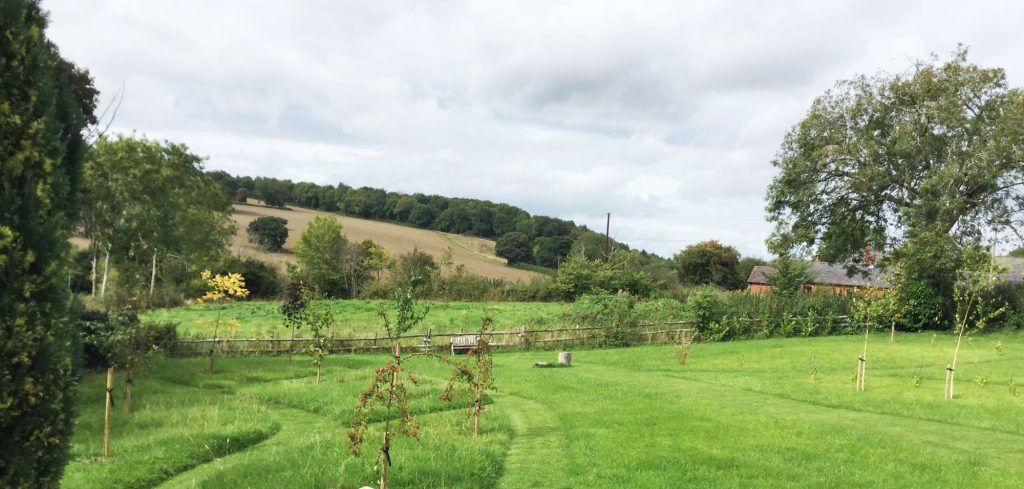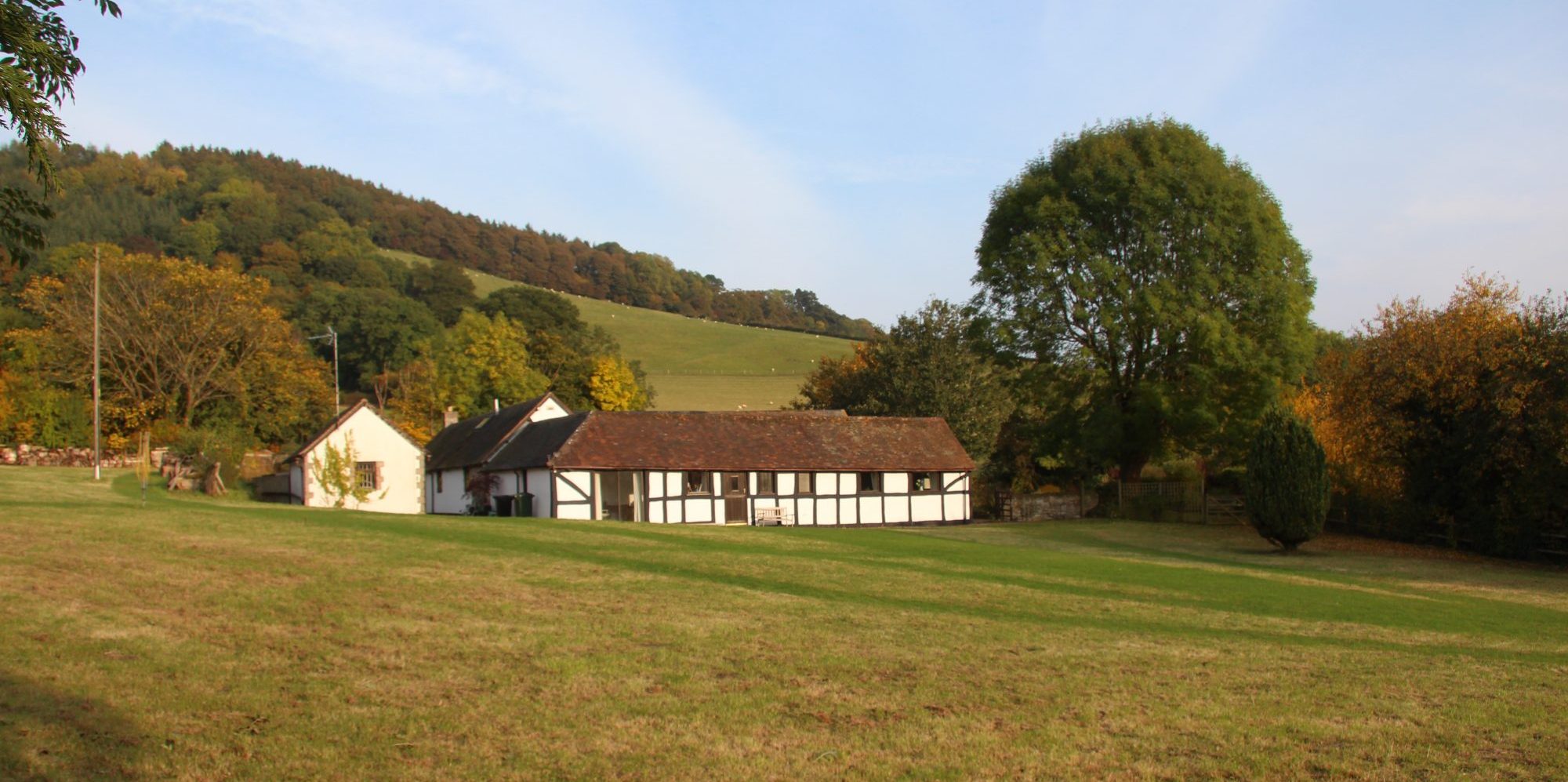Over the past year we have planted 47 trees. How did that happen? I’d promised myself I wouldn’t plant many trees because our previous, much smaller garden, was surrounded by mature oaks casting continuous shade and causing me much exasperation. When we arrived in Shropshire the main garden was one open expanse of grass with a single, rather incongruous mature conifer, so no more battling with shade – bliss! Surely, I’d avoid planting trees?
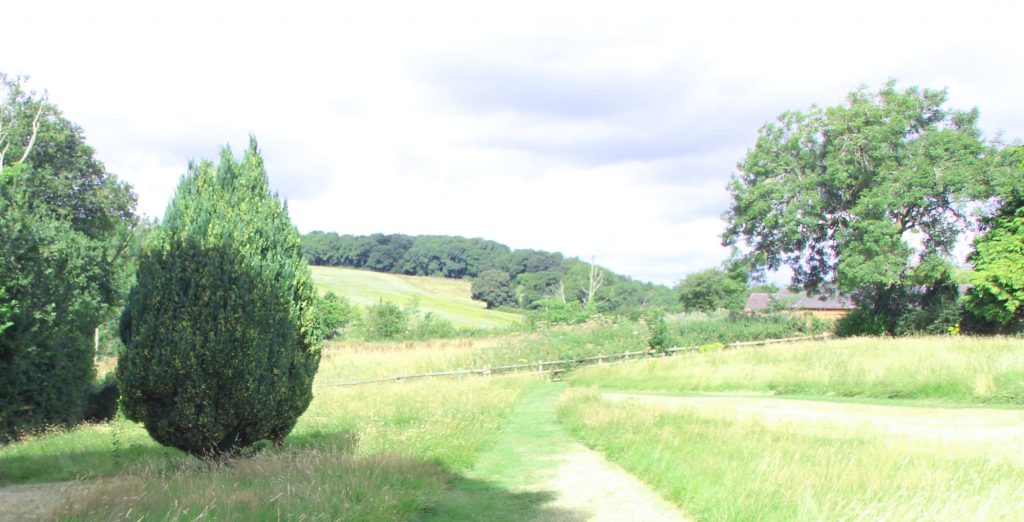
So why have I planted so many? Well, although there was the view to the surrounding hills, there was nothing to draw the eye in the garden, save from the boring conifer. I drew up my garden plan and soon created the orchard with 16 trees then planted 14 ornamental trees on the northern and southern sides of the main garden, leaving a large open space in the centre with the view to the hills. A total of 30 trees – surely enough? Yet as this year has progressed, and I wandered around the garden I found places where a few more trees would help create the structure of the garden … we have just finished planting another 17 trees!
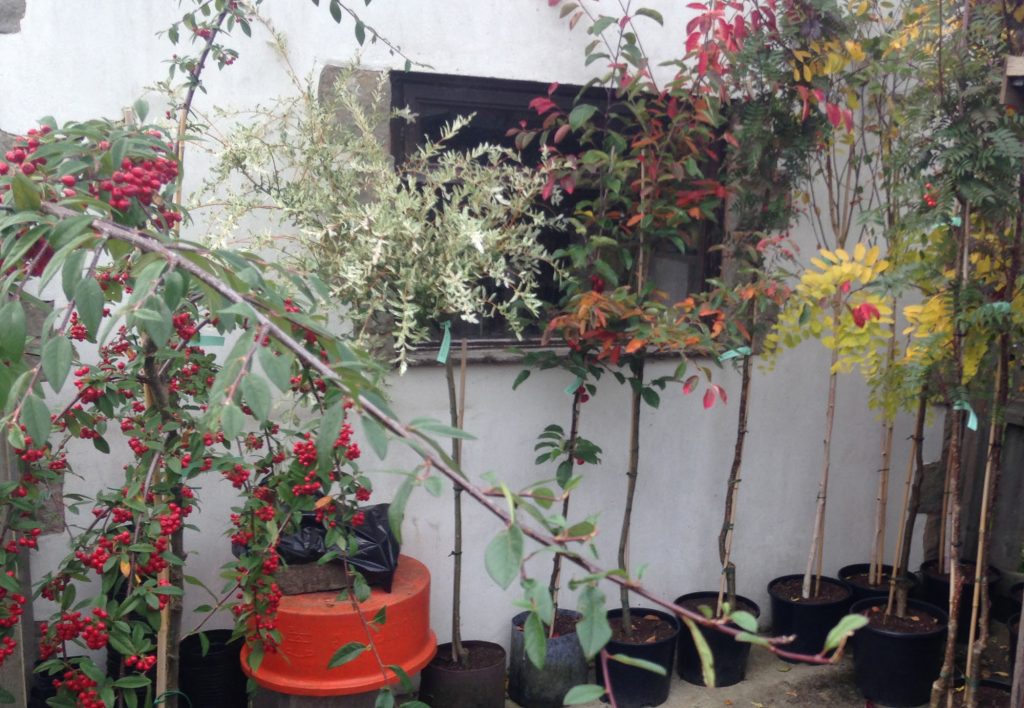
I wanted to create a mini-woodland, so last autumn planted four trees: a weeping birch (betula pendula ‘Youngii’), a robinia (robinia pseudoacacia ‘Frisia’) and two small cotoneasters (cotoneaster ‘Hyrbridus Pendulus’) which marked the boundary of the woodland area from the open, potential meadow area. Early in the year I moved some snowdrops ‘in the green’ from the back of the shrub garden to this area – the beginning of my woodland underplanting. I also planted a purple elder (sambucus nigra ‘Guincho Purple’) and a guelder rose (viburnum opulus) near the fence which separates the woodland area from the secluded garden. We have mowed paths through these trees and bushes and I have now planted four more trees to create a woodland feel: a sweet almond (prunus dulcis); a pink hawthorn (crataegus Crimson Cloud); a flowering cherry (prunus ‘Amanogawa’) and a snowy mespilus (Amelanchier lamarckii, one of my favourite small trees). The framework of my Woodland Walk is now in place.
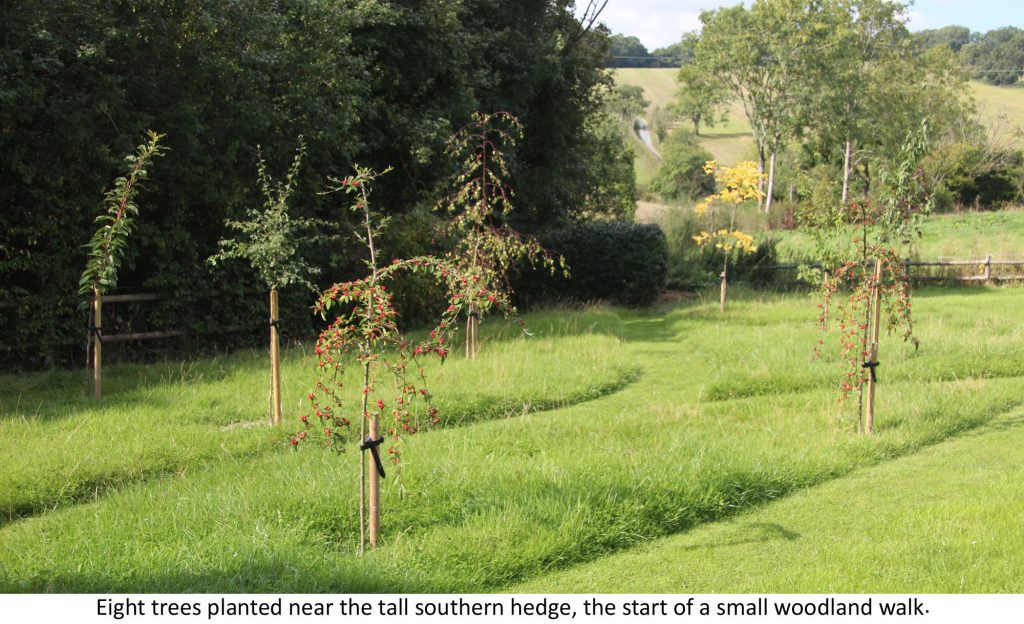
One of our first trees was a flamingo willow standard (salix integra ‘Hakuro Nishiki’), which I planted to give height to the new border in the secluded garden. As well as the variegated foliage I was delighted with the bright red stems throughout the winter. So, I have planted another three to create a row along the border; they contrast beautifully with the shady hedge beyond. The new ones suffered in the heat with many young leaves shrivelling, but after trimming off the dead tips they have all recovered and are looking healthy. They do a great job of separating the secluded area from the rest of the garden.

One part of my plan which has remained unchanged is a stand of three silver birches (betula jacquemontii) which I have planted on the opposite side from the woodland. Behind them I planted a group of the yellow barked dogwood, (the dogwood which has been so disappointing, but which are still growing). I’ll be supplementing this group with the cuttings which I am nurturing, as I hope that eventually their yellow stems will be a contrasting foil for the white trunks of the birches.
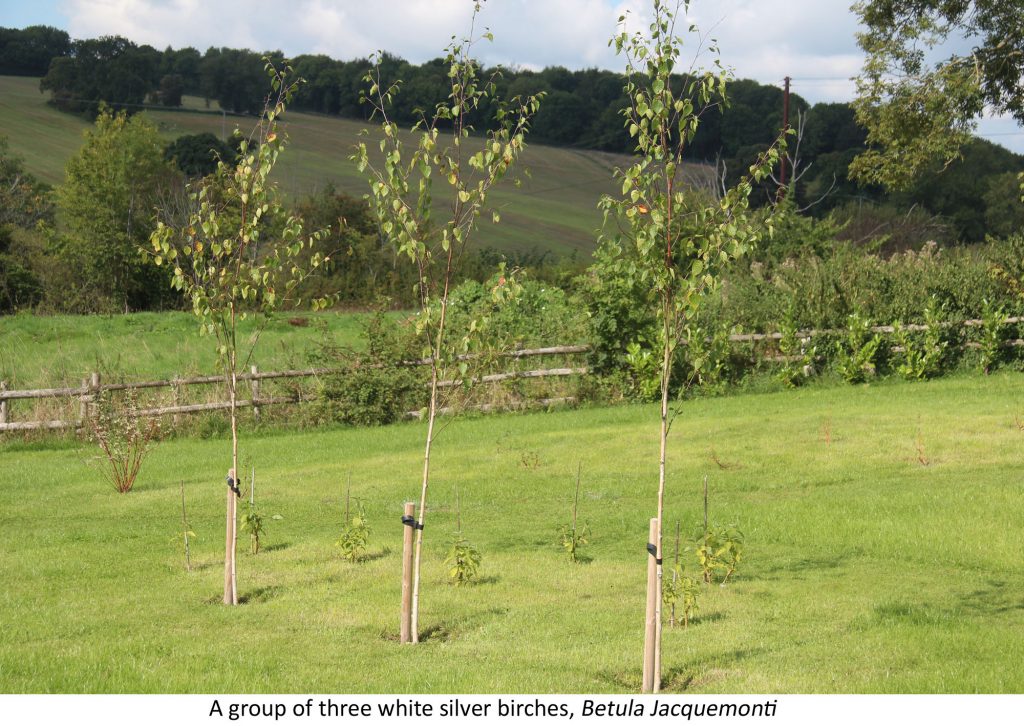
I originally planted just two specimen trees in the far south‑west and north‑west corners of the garden, a purple leaved acer (acer platanoides ‘Crimson King’) and one with leaves green above and purple beneath (acer pseudoplatanus Spaethii). Both are potentially large trees, but I have positioned them to frame the view of the hills. But as the summer progressed I decided that there was room for two more specimens in the northwest corner: a Japanese larch (larix kaempferi (leptolepis)) which already has attractive cones and is promised to soon grow into a tall majestic deciduous tree; and finally, a tulip tree (liriodendron tulipifera) with its unusually shaped leaves, a tree which has intrigued me for many years. Hopefully these large trees will withstand the winds of our exposed garden and eventually provide some protection for the garden.
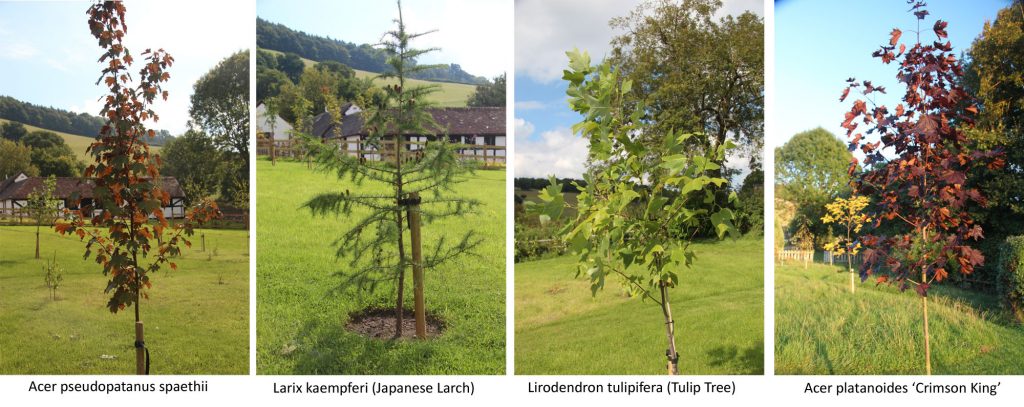
Our garden now looks very different to the empty space we acquired. The conifer has been incorporated into the boundary between sections of the garden and no longer seems so obtrusive. And our new trees have given the garden its structure, height and interest. Most are quite small ornamental trees and, even though some will grow into large trees, I think they are positioned so that shade will not become a problem. I don’t intend to plant any more trees (though I would like an alder with red catkins, and I’ve always wanted a wedding cake tree …).
